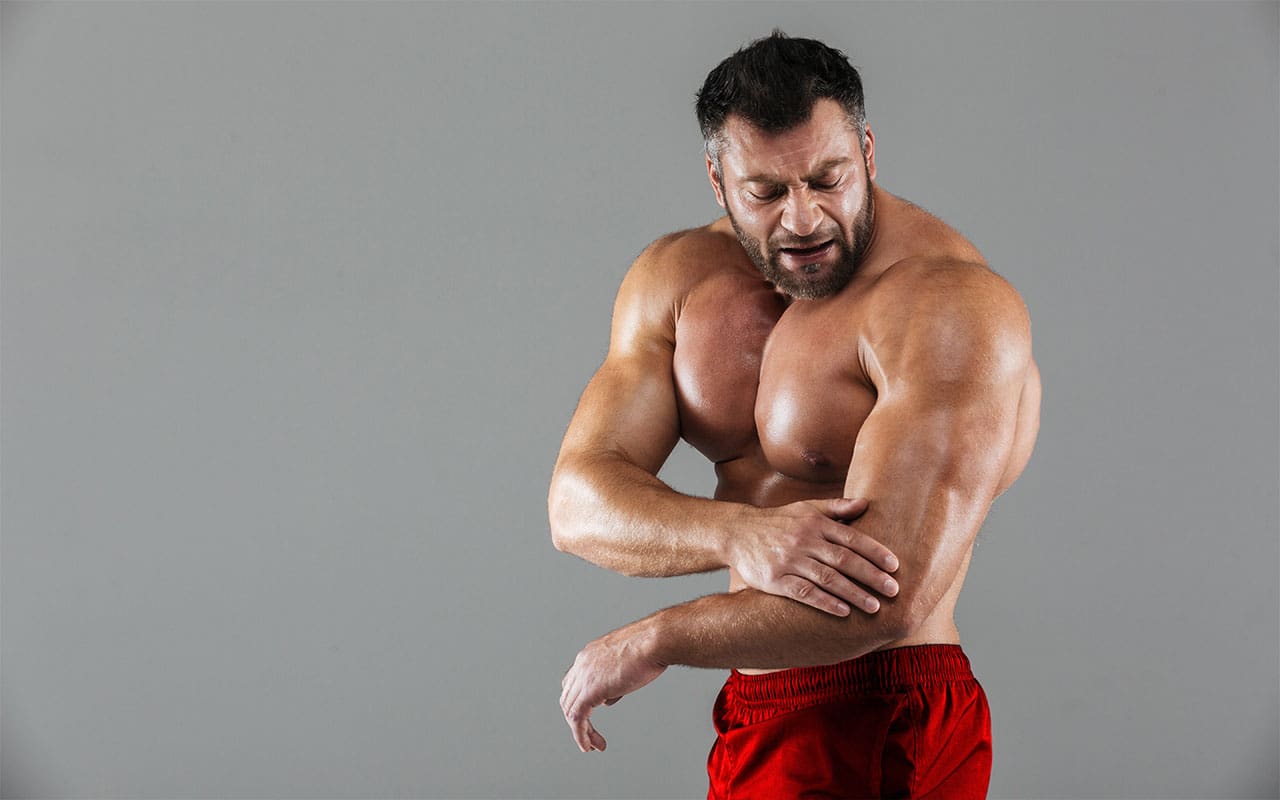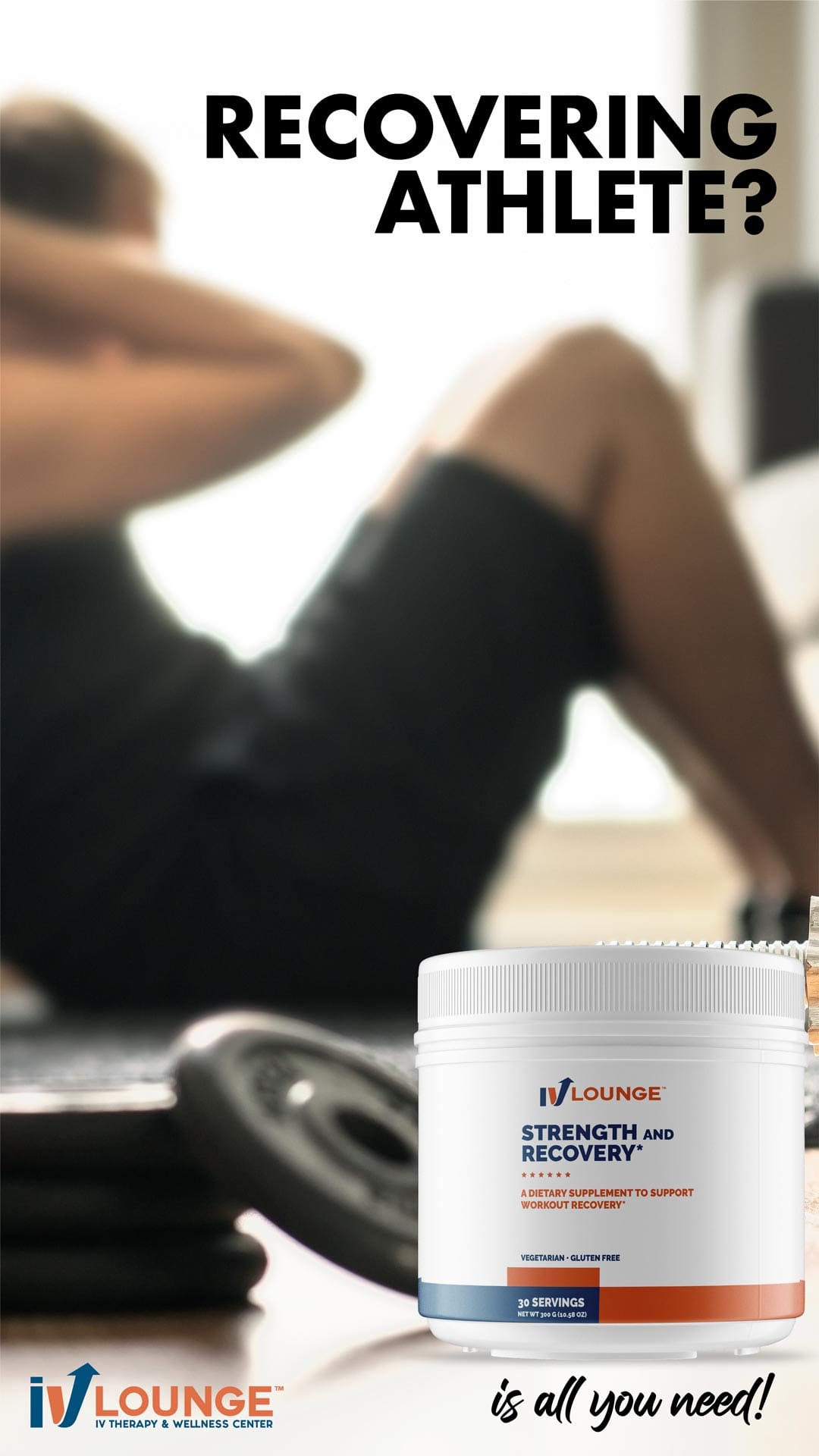By Muscle Media
Do you know what causes arthritis? Let’s try to explain it as simply as possible. Your bones are connected by a variety of joints, from your knee and hip joints to the joints in your fingers and your toes. Wherever bones meet, there is a rubbery, protective layer called cartilage. This layer allows your joints to move smoothly and painlessly.
But even cartilage cannot do this job alone. A thin membrane called the “synovium” provides fluid that lubricates the moving parts of the joint. When the cartilage wears out, the synovium becomes inflamed. As a result, the affected person develops either “osteoarthritis” or “rheumatoid arthritis.”
In osteoarthritis, the cartilage can be eroded so much that one bone rubs directly on the other bone in a joint. This type of arthritis develops gradually over a lifetime. It is a result of the wear and tear placed on your joints over the years. Very few people escape some degree of osteoarthritis, though the severity varies greatly.
As a matter of fact, if you are over the age of 50, you are likely to have at least one joint affected by osteoarthritis. Osteoarthritis affects both men and women equally. By far, it is the most common type of arthritis, with over 16 million Americans sufferers.
Rheumatoid arthritis involves damage to the synovium as the source of discomfort. Doctors and researchers are still not absolutely sure what causes it. Most think that rheumatoid arthritis is an autoimmune disease. The immune system mistakenly attacks certain healthy tissues in the body, including the joints and the synovium.
Rheumatoid arthritis begins with swollen, red, stiff, and painful joints. However, it may progress until scar tissue forms in the joint. In extreme cases, the bones may actually fuse together. Almost 75% of the 2 million people with rheumatoid arthritis in the United States are women. The disease can develop as early as the teen years.
REGULAR EXERCISE FOR ARTHRITIS PREVENTION
For those who want to prevent or at least minimize arthritis pain, a good, weight-bearing, low-impact exercise and stretching plan can be a lifesaver. Strong muscles help protect the joints from wear and tear. The movement helps to keep joints flexible. This is why staying fit is worth the effort, even for people older than 50.
However, most Americans over 50 are still living sedentary lifestyles. Most of them believe that exercise is just for people who’ve been athletic all their life. Others say exercise is for young people and engaging in exercise will do them more harm than good.
And, of course, some excuse themselves from exercise by claiming they don’t have time or the energy. While it can be hard to find time or energy to exercise, there is no excuse to postpone an activity that could decrease arthritis symptoms and increase the quality of life.
Keep in mind that preventing arthritis is not an exact science, but researchers have discovered a few ways to lower your risk. Here is how:
DO NOT “WEIGHT AROUND”
The single most important measure you can take to prevent osteoarthritis pain in the knee is to lose weight. It should be no surprise that extra weight puts extra stress on your knees. For example, if you’re 10 pounds overweight, you put 60 pounds per square inch of additional pressure on your knees with every step.
That extra pressure slowly but surely erodes the cartilage in your knees, leading to arthritis. Studies have clearly supported the idea that weight loss aids in arthritis prevention. In one study, overweight women who lost 11 pounds or more over a 10-year period decreased their risk of developing osteoarthritis of the knee by 50%.
STRETCH THOSE MUSCLES
Any kind of stretching is beneficial as long as you do not bounce. According to numerous clinical studies, bouncing can lead to a muscle pull. Instead, try to hold a slow, steady stretch for 15 – 20 seconds, then relax and repeat.
It is best to warm up by exercising before performing any stretching. You might try some light walking or jogging. It’s also a good idea to stretch every day. Ask your doctor to teach you stretches. Focus on potential arthritis trouble spots, such as your knees or the lower back.
WALKING IS ALWAYS THE BEST EXERCISE
A good start to a personal program involves taking a good long walk at least three times a week. As you get stronger, you may want to participate in a low-impact exercise routine, which could also produce results.
While there is little evidence that running is bad for the joints, aggressive running may aggravate an injury if you already have one. Just remember to check with your doctor before starting any new exercise program.
BEST EXERCISES FOR PEOPLE WITH ARTHRITIS
Apart from walking and stretching, there are also other exercise types that can be beneficial for people with arthritis. They are perfect for people who want to make their exercise routine more diverse.
WATER ACTIVITIES
Swimming is always a good exercise, no matter which age group you belong to. It will have a positive impact on your body, even if you are completely healthy. Swimming activates all muscle groups, and it is great for cardiovascular endurance.
As such, swimming can be great for people with arthritis. However, arthritis patients should be careful when swimming and avoid making sudden and too intense movements. They should adjust their swimming style so that it doesn’t make their artists even worse.
Another great water activity is water aerobics. Water aerobics is usually performed chest-deep in the water. It involves exercises focused on increasing your cardiovascular endurance. However, when you perform these exercises in water, the water resistance helps build and strengthen muscles.
Of course, just like with any other activity, arthritis patients should do moderate movements that won’t further increase their pain.
Finally, if you suffer from arthritis but you’re not interested in swimming or exercising, you can keep it simple and just walk. Walking in chest-deep water is a great way to add some resistance to your leg muscles and make them stronger.
Another benefit of water activities, apart from providing resistance to your movements, is that these activities are lighter on your joints. You get all the benefits of exercise while putting less strain on your joints.
PILATES
This is another great exercise for people with arthritis. Some studies even suggest that Pilates is better for arthritis patients than conventional exercises. It can help strengthen your back and core muscles and increase your flexibility.
Make sure to perform pilates exercises in the presence of a licensed pilates teacher. Some pilates teachers specialize in training arthritis patients. A good pilates teacher will show you how to move within a pain-free range, helping you avoid potential injuries.
ELLIPTICAL MACHINE
Usually a part of a cardio workout, an elliptical machine can train both your lower and upper body without putting too much strain on your joints. This makes it a perfect exercise for arthritis patients. It also helps burn fat and lose weight, reducing the load on your joints.
Again, the key to this exercise is moderation. Start with shorter sessions and take it slowly. With time, you can increase sessions but don’t overdo it. Exercising too much can bring you more harm than good.
YOGA
According to the Arthritis Foundation, yoga is one of the best exercises for arthritis. It improves flexibility and mobility, and when done properly, yoga can even reduce arthritis pain. Some of the most arthritis-friendly yoga poses are:
- Chair pose
- Side stretch
- Cat cow pose
- Seated spinal twist
- Cobbler’s pose
- Standing forward bend
- Standing side bend
- Seated forward bend
- Warrior pose
- Triangle pose
Since these poses can put a certain strain on your joints, you should perform them in the presence of a yoga expert. This way, you will ensure that you do each pose properly and with the least amount of joint strain possible.
ZUMBA GOLD
Zumba has become insanely popular because it combines Latin dances with exercise. It is perfect for everyone who finds traditional exercises boring. However, Zumba is also great for people with limited mobility. There is even Zumba Gold, a type of Zumba created for seniors and arthritis patients.
Zumba Gold will make you forget about your arthritis. You will be able to dance, move, and enjoy music without worrying about your joints. It is also a perfect opportunity to meet new people and simply have fun while getting fit at the same time.
CYCLING
Did you know that riding a bike is a great exercise for people with arthritis? This includes both indoor and outdoor cycling, as well as e-bikes, tricycles, and even foot-hand cycles. Cycling stimulates the production of synovial fluid, and it strengthens the muscles without creating too much strain on the joints.
Of course, if you suffer from arthritis, be careful how much you cycle in one session. Start with shorter sessions, and don’t try to beat records! Ride your bike slowly and enjoy the ride. Also, choose a flat terrain with even surfaces. Bouncy and lumpy terrains can damage your joints.
MODERATE WEIGHT TRAINING
Weight or strength training can be beneficial for your joints if done properly. It strengthens your muscles, and strong muscles provide better support to your joints. Make sure to consult with your doctor before choosing the best strength exercises for you.
Don’t try to lift too heavy weights. Start with light dumbells and increase the weight gradually. For each set, do 12 repetitions. Alternate between opposite sets of muscles – biceps and triceps, quadriceps and hamstrings. Always start with a larger muscle group first.
INDIVIDUAL EXERCISES
There are also other individual exercises you can do to reduce or prevent the arthritis pain in your joints. These exercises might seem too easy or like they make no impact on your muscle strength or joint mobility. However, if you perform them regularly, these exercises can help you significantly. Some of the best exercises you can try are:
- Heel and toe lift – Sit on a chair with your feet facing forward. First, lift your heels, but keep your toes on the ground. Then, lift your toes, but keep your heels on the ground.
- Ankle circles – Sit on a chair with your feet facing forward. Rotate your feet in one direction for several seconds, then rotate them in the opposite direction.
- Knee raises – Sit on a chair with a straight back. Lift your knees, one by one, as high as possible. Don’t bend your back.
- Leg lifts + ankle movements – Sit on your chair so that your back has support. Straighten your knee gradually. Once your knee is only slightly bent, bend your ankle so that your toes face forward. Reverse the ankle so that your toes face upward again. Repeat with your other leg.
- Shoulder stretches – You can do this either standing or sitting. Press your forearms together in front of your body. Then, stretch your arms overhead as high as possible. Repeat several times.
- Shoulder squeezes – Put your hands together so that your palms touch each other. Stretch your arms forward as much as you can. Then, bring your palms to your chest by bending your elbows and squeezing your shoulder blades together.
- Finger exercises – Raise your hands so you can see them. Try to bring each finger, one by one, as close as possible to the thumb of the same hand. Then, return each finger to its natural position. Repeat on both hands.
- Hip stretches – Stand close to the wall and support yourself with your hands against the wall. Place one leg in front of each other, but keep them shoulder-width apart with your feet pointing forward. Move forward so that you only bend at your ankles. Switch legs.
BALANCED NUTRITION FOR PAIN-FREE JOINTS
First of all, a balanced diet will ensure that you don’t have any excess weight that can further strain your joints. Of course, such a diet will also make you healthier and give you more energy overall. However, a well-chosen diet can also help with your arthritis.
For example, Omega-3 fatty acids reduce inflammation, and they can also reduce the symptoms of arthritis. Try to eat fatty fish, such as mackerel, tuna, and salmon. These fish are also rich in vitamin D, which also has anti-inflammatory effects.
Eat fruits and vegetables because they are rich in antioxidants. This is especially true for berries and dark, leafy greens. Blackberries, strawberries, blueberries, and other berries contain anthocyanins, which are also anti-inflammatory.
Broccoli, spinach, kale, and other leafy greens are rich in vitamins C and E. Vitamin C is especially important because it stimulates collagen production, which is the main component of cartilage tissue in our joints.
Various nuts and seeds, including almonds, walnuts, hazelnuts, sunflower seeds, peanuts, and many more, are rich in fatty acids, fibers, and proteins. As such, they reduce inflammation and contribute to your joint’s health.
Some other foods and products you should incorporate into your diet:
- Olive oil
- All onion, leek, and garlic varieties
- Green tea
- Legumes and beans
SUPPLEMENTS
Apart from eating healthy foods, you can also use some supplements to enrich your diet. For example, you can take fish oil capsules because they are rich in Omega-3 fatty acids. You can also take Vitamin D and calcium supplements.
Some arthritis patients take glucosamine and chondroitin because they reduce the symptoms of osteoarthritis by repairing the cartilage in the joints. Finally, some people take turmeric because of its anti-inflammatory properties.
There are several other supplements you can take to alleviate your arthritis pain. You should consult your therapist so that they can recommend the most suitable supplements for your condition. Don’t take any supplements before consulting your therapist.
COMMON EXERCISE MISTAKES PEOPLE WITH ARTHRITIS MAKE
While regular and moderate exercise can do wonders for your arthritis, so many things can go wrong, especially if you make some common mistake. These mistakes might seem like they aren’t a big deal, but they can significantly hinder your efforts and even cause you more pain.
For example, probably the most common mistake that arthritis patients make is not warming up and stretching before exercise. Warming up helps prepare your joints for exercise, reducing the possibility of injury.
The next common mistake is ignoring your pain while exercising. That’s never a smart thing to do, even when you don’t have arthritis. Pain is a warning before injury, and people with arthritis should take it seriously. Stop the exercise and adjust it so that it doesn’t cause pain.
Overworking yourself is another common mistake, and it can be particularly dangerous for arthritis patients. Don’t push yourself too hard. Otherwise, the exercise will have the opposite of the desired effect.
Finally, starting any form of exercise without consulting a professional can be dangerous. Also, performing more complex exercises without supervision can lead to injuries. Consult your therapist to avoid unnecessary injuries and complications.
CONCLUSION
Arthritis diagnosis doesn’t have to mean the end of your active life. On the contrary, it can be your wake-up call to start living more actively. However, you need to educate yourself on recommended exercises for arthritis, proper diet, and some common mistakes to avoid.
The bottom line is that exercise is the most important of all healthy habits. We are designed to be active. Hence, it’s important for us to exercise to stay healthy and keep joints free from wear and tear.
An unexercised body, even if free from the symptoms of arthritis, is not at its full potential. What better reason to start exercising right now?







